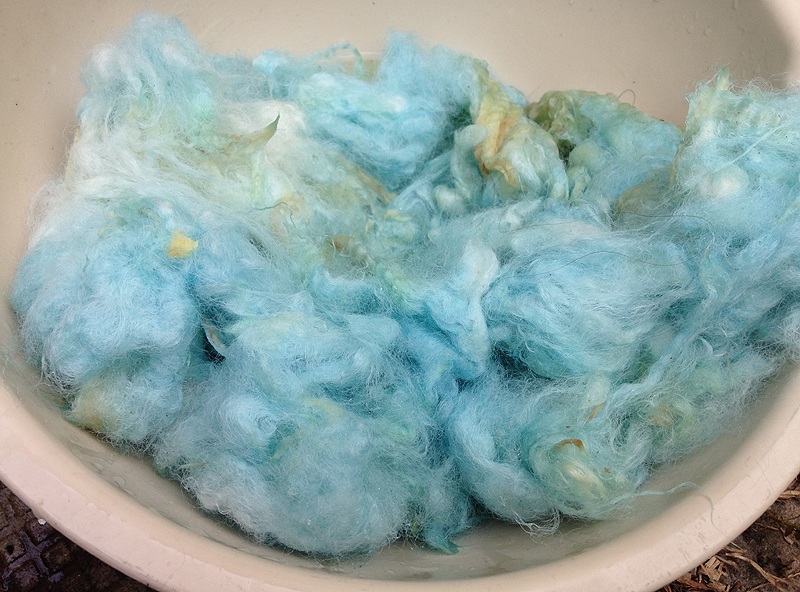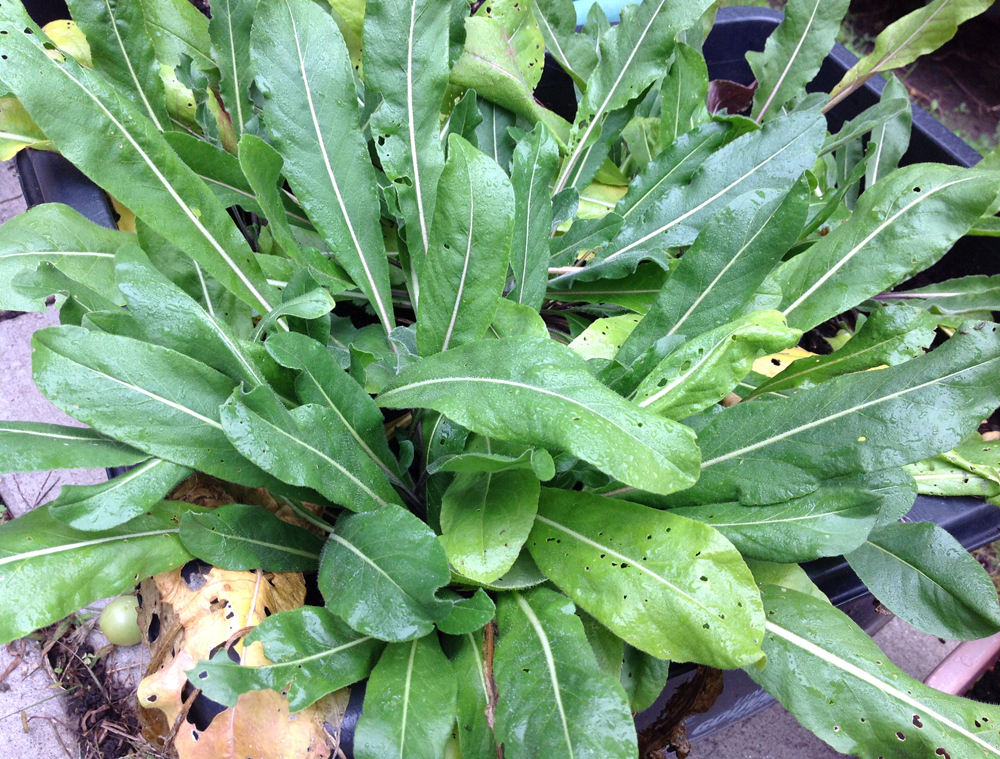Today I dyed with the woad I grew this summer. It had grown happily in a recycling bin, munched on by some cabbage butterfly caterpillars.
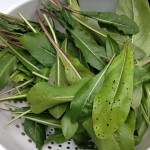
To start I put a big pot of water on the stove and heated I up to almost boiling. While it was heating I picked all my woad leaves and weighed them. I only had 170g. I tore up the leaves and put them in the pot of hot water.
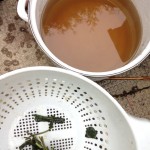
The leaves must be steeped for 10 minutes at a temperature of 80 degrees Celsius. After the 10 minutes were up I removed the pot from the stove and put it into a sink of cold water to cool it down quickly.
I was able to cool it to 55 degrees in about 5 minutes by stirring it and adding more cold water and ice cubes to the sink.
I took the pot outside and strained out the leaves. You can use them to dye to get yellows so I put them aside for now.
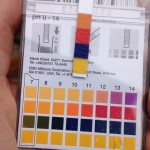
The next step was to turn the dye liquid alkaline. I used 1 teaspoon of lye. I tested the pH with my pH test strips and it was a bit too alkaline. It was supposed to be a pH of 10 but it turned out to be about 12.
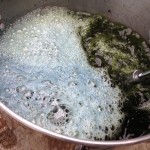
Then I had to aerate the dye liquid to introduce oxygen into it. This is rather counterintuitive if you have dyed with indigo where you have to be careful to keep oxygen out. I had bought a cheap hand mixer at a second hand store and used it to beat the dye liquid for 10 minutes. This created foam on top which was green and then blue.
The final step to prepare the dye bath is to remove the oxygen with thiourea dioxide. I added about 2 tablespoons full and stirred gently to dissolve it. Then I left the vat for 30 minutes.
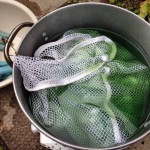
Now the vat was ready to dye with. I weighed some washed fleece and soaked it in water. I put about 80 g of fleece in a mesh laundry bag and submerged it gently into the vat. At this point you must be careful not to get oxygen into the vat so you don’t stir it. I left it in the dye for 15 minutes. When I took it out I tried to squish out as much liquid as I could while still under the surface of he dye. Once out of the pot I let the excess dye drip into a bowl, rather than back into the dye pot, which would introduce oxygen.
Woad is like indigo in that the best dye results come from several short dips in the dye with time in the air in between. The dye itself looks green but after you take the wool out of the vat it turns blue as it reacts with the oxygen in the air. I dyed two lots of fleece, each about 80 g, and did four sessions of 15 minutes in the dye followed by 15 minutes in the air. The total amount of wool I was able to dye was about equal to the weight of the woad leaves. The colour I got was a wonderful light turquoise. I have to wait 24 hours before rinsing it to get the best colour.
